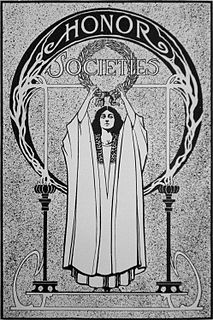See also
- "Application of the Machine-Oriented Language Epsilon to Software Development", I.V. Pottosin et al., in Machine Oriented Higher Level Languages, W. van der Poel, N-H 1974, pp. 417–434
- FOLDOC - http://foldoc.org/EPSILON
EPSILON is a macro language with high level features including strings and lists, developed by A.P. Ershov at Novosibirsk in 1967. EPSILON was used to implement ALGOL 68 on the M-220 computer.
In computing, a compiler is a computer program that translates computer code written in one programming language into another language. The name "compiler" is primarily used for programs that translate source code from a high-level programming language to a lower level language to create an executable program.

The Free On-line Dictionary of Computing (FOLDOC) is an online, searchable, encyclopedic dictionary of computing subjects.
In software engineering and computer science, abstraction is:
In computing, aspect-oriented programming (AOP) is a programming paradigm that aims to increase modularity by allowing the separation of cross-cutting concerns. It does so by adding additional behavior to existing code without modifying the code itself, instead separately specifying which code is modified via a "pointcut" specification, such as "log all function calls when the function's name begins with 'set'". This allows behaviors that are not central to the business logic to be added to a program without cluttering the code core to the functionality. AOP forms a basis for aspect-oriented software development.
In computer science, specifically software engineering and hardware engineering, formal methods are a particular kind of mathematically rigorous techniques for the specification, development and verification of software and hardware systems. The use of formal methods for software and hardware design is motivated by the expectation that, as in other engineering disciplines, performing appropriate mathematical analysis can contribute to the reliability and robustness of a design.
The Call Level Interface (CLI) is an application programming interface (API) and software standard to embed Structured Query Language (SQL) code in a host program as defined in a joint standard by the International Organization for Standardization (ISO) and International Electrotechnical Commission (IEC): ISO/IEC 9075-3:2003. The Call Level Interface defines how a program should send SQL queries to the database management system (DBMS) and how the returned recordsets should be handled by the application in a consistent way. Developed in the early 1990s, the API was defined only for the programming languages C and COBOL.
In computer science, a high-level programming language is a programming language with strong abstraction from the details of the computer. In contrast to low-level programming languages, it may use natural language elements, be easier to use, or may automate significant areas of computing systems, making the process of developing a program simpler and more understandable than when using a lower-level language. The amount of abstraction provided defines how "high-level" a programming language is.
Programming paradigms are a way to classify programming languages based on their features. Languages can be classified into multiple paradigms.
In computer science, imperative programming is a programming paradigm that uses statements that change a program's state. In much the same way that the imperative mood in natural languages expresses commands, an imperative program consists of commands for the computer to perform. Imperative programming focuses on describing how a program operates.
An object-oriented operating system is an operating system that uses object-oriented programming design principles.
In automata theory, a finite-state machine is called a deterministic finite automaton (DFA), if
The history of programming languages spans from documentation of early mechanical computers to modern tools for software development. Early programming languages were highly specialized, relying on mathematical notation and similarly obscure syntax. Throughout the 20th century, research in compiler theory led to the creation of high-level programming languages, which use a more accessible syntax to communicate instructions.
Role-oriented programming as a form of computer programming aims at expressing things in terms that are analogous to human conceptual understanding of the world. This should make programs easier to understand and maintain.

In the United States, an honor society is a rank organization that recognizes excellence among peers. Numerous societies recognize various fields and circumstances. The Order of the Arrow, for example, is the National Honor Society of the Boy Scouts of America. Chiefly, the term refers to scholastic honor societies, those that recognize students who excel academically or as leaders among their peers, often within a specific academic discipline.
In computer science, beam search is a heuristic search algorithm that explores a graph by expanding the most promising node in a limited set. Beam search is an optimization of best-first search that reduces its memory requirements. Best-first search is a graph search which orders all partial solutions (states) according to some heuristic. But in beam search, only a predetermined number of best partial solutions are kept as candidates. It is thus a greedy algorithm.
Machine epsilon gives an upper bound on the relative error due to rounding in floating point arithmetic. This value characterizes computer arithmetic in the field of numerical analysis, and by extension in the subject of computational science. The quantity is also called macheps or unit roundoff, and it has the symbols Greek epsilon or bold Roman u, respectively.
The following outline is provided as an overview of and topical guide to computer programming:
Spice Lisp is a programming language, a dialect of Lisp. Its implementation, originally written by Carnegie Mellon University's (CMU) Spice Lisp Group, targeted the microcode of the 16-bit workstation PERQ, and its operating system Accent. It used that workstation's microcode abilities to implement a stack machine architecture to store its data structures as 32-bit objects and to enable run time type-checking. It would later be popular on other workstations.
A third-generation programming language (3GL) is a high-level computer programming language that tends to be more machine-independent and programmer-friendly than the machine code of the first-generation and assembly languages of the second-generation, while having a less specific focus to the fourth and fifth generations. Examples of common and historical third-generation programming languages are ALGOL, BASIC, C, COBOL, Fortran, Java, and Pascal.